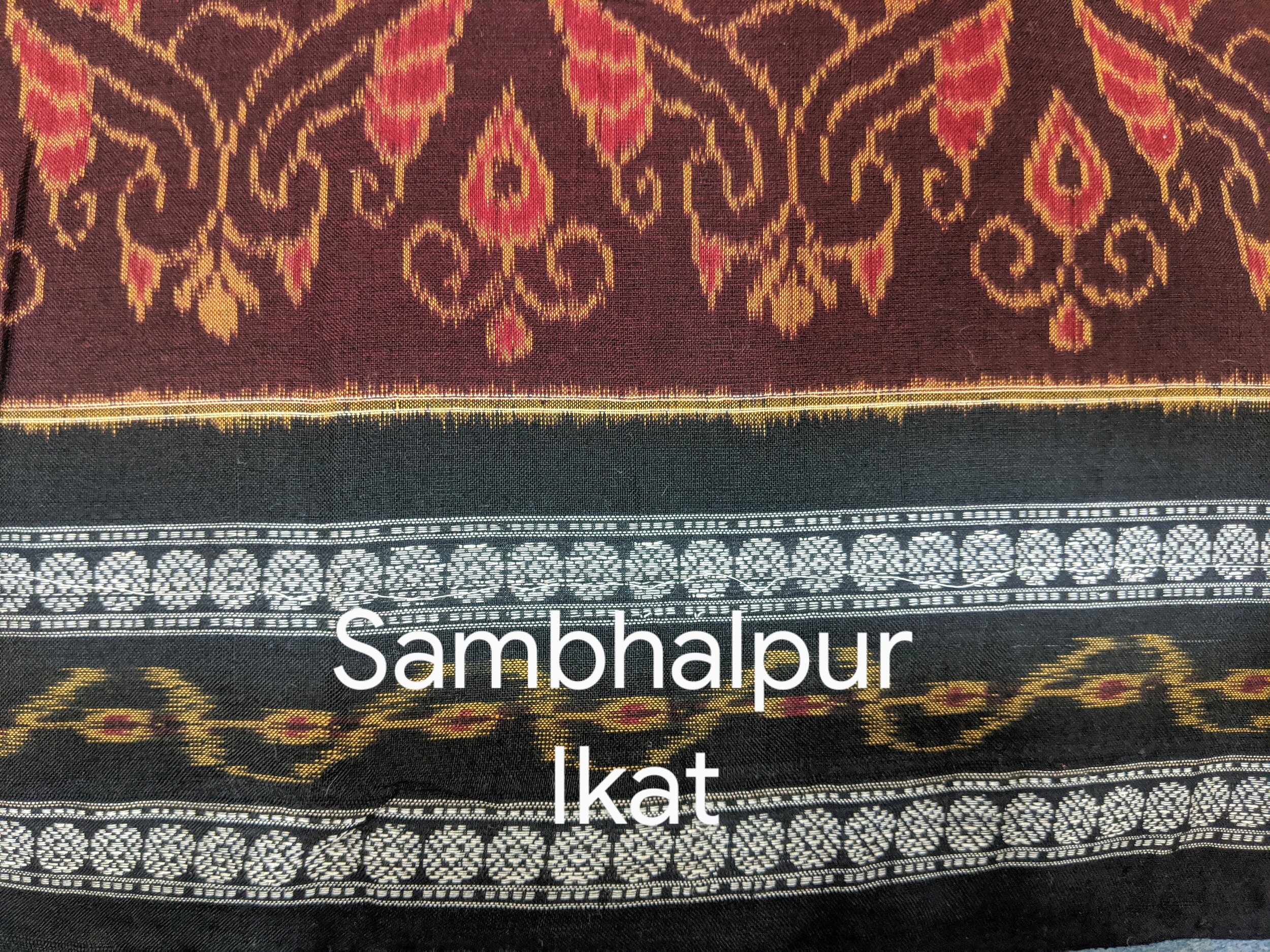1) Pochampally ikat
IKAT - is a type of weaving where the warp, weft or both are tie-dyed before weaving to create designs on the finished fabric. Great care must be taken in tying resist areas with water repellent material such as bicycle inner tubes cut into strips. The precision of the wrapping determines the clarity of the design. After wrapping, the warp threads are dyed. When finished and unwrapped, the areas under the ties have stayed the original colour. Pochampally ikat has a very graphic and contemporary feel and it happens to be one of my favourite weaves.
Pochampally ikat is woven in parts of Andhara and Telangana and has been recognized by UNESCO as an important weaving cluster.
2) Samphalpur Ikat
However, the Odisha ikat or Sambhalpur ikat follows a curvilinear style and has a feathery look with hazy outlines.Sambhalpur ikat uses sevral dye baths to achieve its intricate motives. Sambhalpur ikat motives mostly inspired by situations in the Mahabharat, Ramayan and designs on the Sun temple in Konark.
3) Kanjiwaram
Kanjiwaram silk gets its name from the Kanchipuram area in Tamil Nadu where these sarees are woven.We can recognize Kanjiwarams with their a distinct colour of zari obtained by a process of treating it with the water in that region and that what sets it apart.Common motifs found on kanjiwarams are the temple border, peackoks and the broard gold patta. The silk used is also special , it is obtained by sericulture of the mulberry worm that is converted to produce fine quality silk which is then woven into a Saree. Orignally Kanjiwararams were woven in real silver thread and coated with Gold which in todays time is know as “Real Zari”
5) Benarsi
Possibly the first name that comes our mind when we say handwoven textile.
Its one of the busiest and oldest weaving centers in India with references found in the Rig Veda but it was made popular by the Royalty of India.
The four main fabric varieties of Banarasi sarees are: pure silk katan, organza with zari and silk kora, georgette, a sheer lightweight crêpe fabric, and shattir, used in modernised Banarasi sarees.
6) Chanderi
Light weight, airy and luxurious that’s how Chanderi can be best described. Chanderi fabric is produced by weaving in silk and golden Zari in the traditional cotton yarn that results in the creation of the shimmering texture.Chanderi can be found in 3 textures silkXcotton, pure cotton and pure silk. Chanderi sarees were patronized by the royal family of Scindia since it was a saree that could easily be worn during the summer. Chanderi gets its name from the town its woven in situated in Madhya Pradesh.
Devika Vaid a fashion designer and a textile enthusiast based in Bombay. You can get in touch with Devika on Instagram: @devika_vaid






